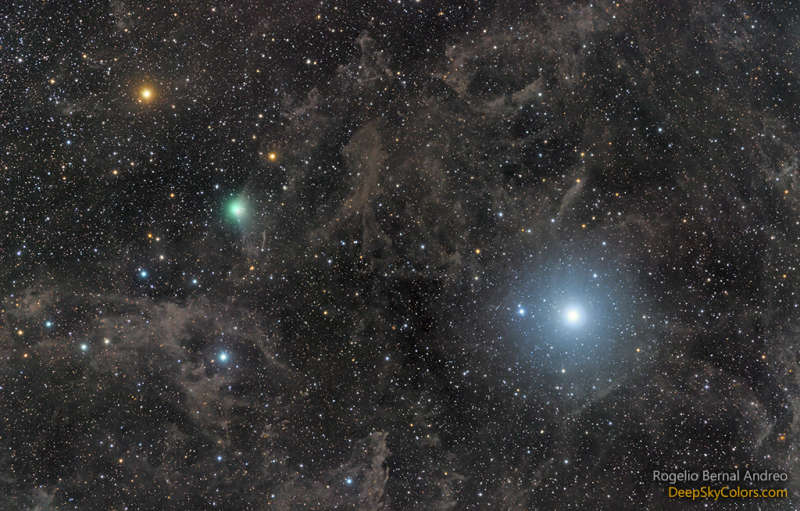
|
Credit & Copyright: Rogelio
Bernal Andreo
Explanation:
One of these two bright sky objects is moving.
On the right is the famous star Polaris.
Although only the 45th
brightest star
in the sky,
Polaris is famous for appearing stationary.
Once you find it, it will
always appear
in the same direction --
all night and all day -- for the rest of your life.
This is because the northern spin pole of the Earth -- called the
North Celestial Pole -- points near
Polaris.
On the left, about ten million times closer, is
Comet Lovejoy,
which noticeably changes its sky position by the hour.
The featured image was taken last week.
Officially designated
C/2014 Q2 (Lovejoy),
this disintegrating snowball is on a visit from the outer
Solar System
and will only appear near the
North Star for a few more weeks.
That should be
long enough, however, for northerners with binoculars or a small telescope
to see the greenish
coma of this fleeting newcomer, perhaps with the help of a
good star map.
|
January February March April May June July August September October November December |
| ||||||||||||||||||||||||||||||||||||||||||||||||
NASA Web Site Statements, Warnings, and Disclaimers
NASA Official: Jay Norris. Specific rights apply.
A service of: LHEA at NASA / GSFC
& Michigan Tech. U.
Based on Astronomy Picture
Of the Day
Publications with keywords: polaris
Publications with words: polaris
See also:
